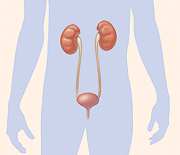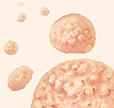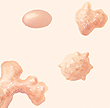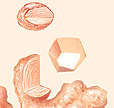Identifying Kidney Stones
Identifying Kidney Stones
There are 4 general types of kidney stones. Your kidney stone’s size and shape determine whether it is likely to pass by itself. Knowing what a stone is made of (its composition) helps your healthcare provider find its cause. Then he or she can suggest the best treatment. X-rays or scans can help show the stone's size and shape. Your healthcare provider may also give you a strainer. You can use this to catch the stone while passing urine, and the provider can then test the stone. Other urine and blood tests may be done to help identify the stone. These tests can also help identify causes for different types of stones.
SizeA stone may be as small as a grain of sand. Or it may be as large as a golf ball. Small stones may pass out of your body when you urinate. |
ShapeSmall, smooth, round stones may pass easily. Jagged-edged stones often lodge inside the kidney or ureter. Staghorn stones can fill the entire renal pelvis and calyces. |
CompositionMost stones are made of calcium oxalate, a hard compound. Stones made of cystine or uric acid, or caused by infection (struvite stones), are less dense. Stones often contain more than one chemical. |
Treating your stones
You and your healthcare provider will work together to form a treatment plan. Your provider may suggest that you let your stone pass naturally. Or you may manage it with medicines. Certain procedures may also help, such as SWL (shock wave lithotripsy) or using a camera inside the body to remove the stone (ureteroscopy). And you will be told how you can help prevent kidney stones in the future.
Updated:
April 12, 2018
Sources:
Diagnosis and acute management of suspected nephrolithiasis in adults, Up To Date
Reviewed By:
Latif, Walead, DO,Walton-Ziegler, Olivia, MS, PA-C



